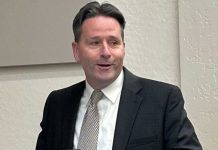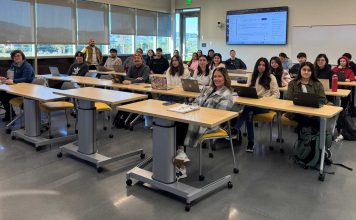Voters this fall may be asked to update Gilroy’s utility tax to
help protect nearly $1.5 million in city revenues and create equity
among taxpayers in a world of changing technology.
Gilroy – Voters this fall may be asked to update Gilroy’s utility tax to help protect nearly $1.5 million in city revenues and create equity among taxpayers in a world of changing technology.
Under the proposed Communications User’s Tax, residents who call Italy from their land-line phone would be taxed the same as neighbors who make the call over a high-speed Internet connection. The law also sets the stage for satellite television subscribers to start paying local taxes, assuming federal officials allow local governments to start taxing the service.
At the moment, cable television subscribers, cell-phone users and land-line phone customers pay the city’s 5 percent Utility User’s Tax on their monthly bills. Those users would see their taxes drop to 4.5 percent under the proposed tax.
City Council members expect to decide next week whether to place the measure on the ballot. In the meantime, they spent Monday evening learning about the intricacies of a tax that is now under assault in the courts and in Congress.
“If the lawsuits turn out negative for the cities, they could lose 75 percent of their existing telecommunications revenues,” city consultant Don Maynor told councilmen Monday.
Gilroy currently generates nearly $1.5 million of its $42 million operating budget from the UUT, a 1971 law that levies a 5 percent tax on cable television and phone bills. Lawsuits have threatened two-thirds of that tax base by attacking the “outdated” definitions of long distance phone calls contained in the Federal Excise Tax, the law underpinning Gilroy’s UUT, according to a memo from the city’s finance department.
Courts have ruled that definitions of a phone call as a function of its time and distance no longer apply in a world where wireless customers pay flat monthly fees. In response, the Internal Revenue Service has stopped collecting the FET and the U.S. Treasury Department has called for a repeal of the tax.
As the legal basis for Gilroy’s UUT erodes, state lawsuits are directly challenging the tax. If successful, they could spell the end of all UUT revenues, including the $520,000 that comes from land-line phone users and the $170,000 from cable television subscribers.
Even if the UUT survives the legal challenges, the tax base will erode as customers continue to migrate from traditional land lines – and even wireless – to more sophisticated options such as Voice over Internet Protocol, or VoIP, according to Maynor, whose company, MuniServices, has worked with 50 cities to update their tax ordinances.
“By modernizing the ordinance, the bleeding will stop,” Maynor told councilmen.
Officials say the ordinance would not generate any new tax revenues if approved, though the calculation does not account for the possibility of new taxes on satellite television. Charter Communications currently provides about 35 percent of television service in Gilroy, according to Edward Merrill, the company’s vice president and general manager of operations in Central and Northern California. Charter faces stiff competition from its rival satellite companies, Dish Network and DirectTV.
“Our cable customers are paying too much in fees,” Merrill said, adding: “If they’re going to reduce those fees and spread them across other services, we’d be okay with that.”
Councilman Dion Bracco agreed that some Gilroyans are getting a free pass when it comes to taxes.
“If we’re allowed to (tax satellite television), that would be a good thing,” Bracco said. “It’s not fair that the cable customers should pay it but satellite customers don’t.”
Officials may not stop there. The ordinance is written broadly enough to allow the city to tax “anything that is transmitted” – whether by Internet, phone lines, satellite, or any other technology that may emerge, according to City Administrator Jay Baksa.
“God only knows where this industry is going,” Baksa said. “At the end of the day, most people will not see any difference in their rates. In fact, some people may see a little bit of a reduction, and we’ll have an ordinance that stands the test of a new millennium.”













